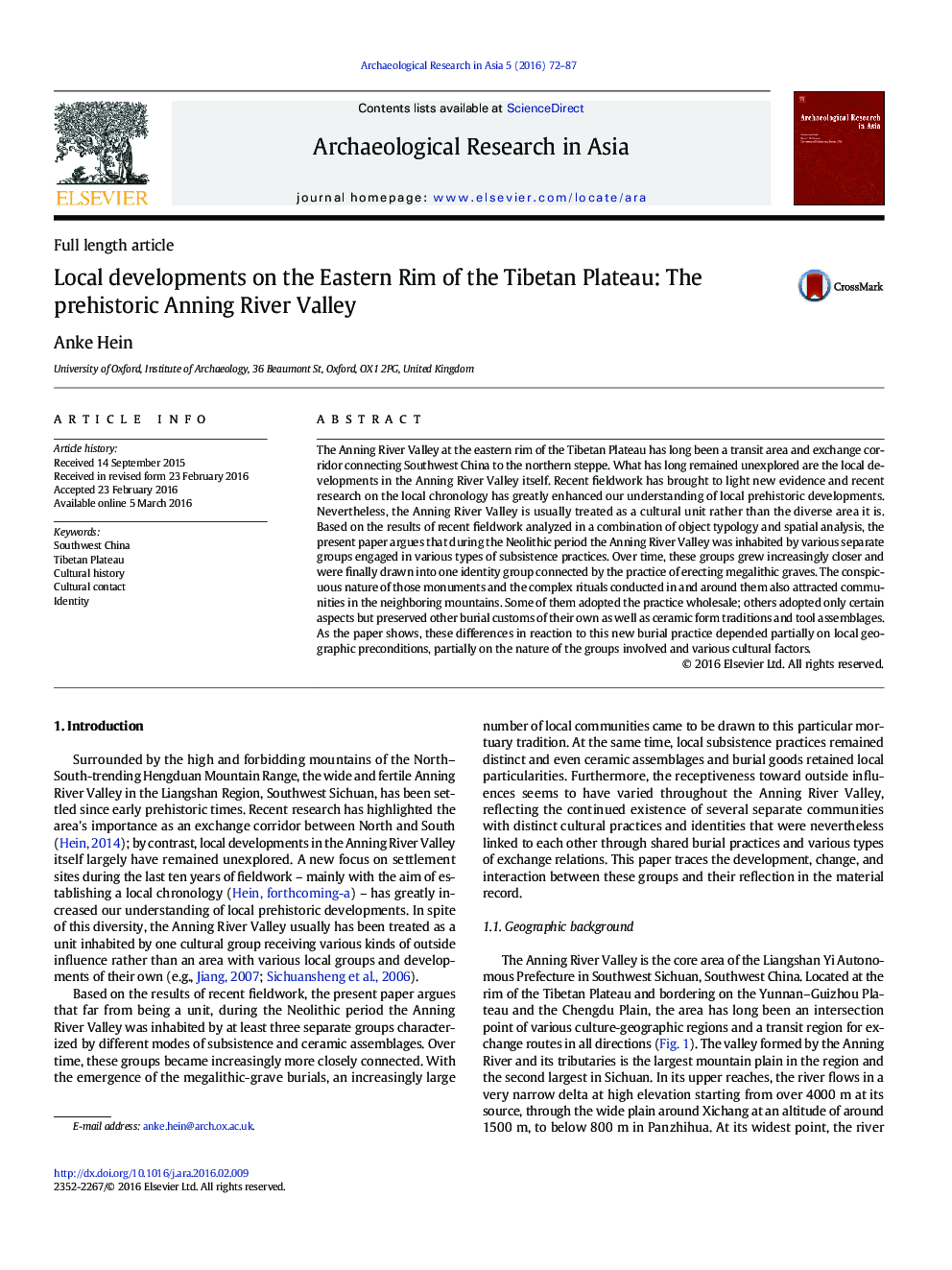| Article ID | Journal | Published Year | Pages | File Type |
|---|---|---|---|---|
| 1034159 | Archaeological Research in Asia | 2016 | 16 Pages |
The Anning River Valley at the eastern rim of the Tibetan Plateau has long been a transit area and exchange corridor connecting Southwest China to the northern steppe. What has long remained unexplored are the local developments in the Anning River Valley itself. Recent fieldwork has brought to light new evidence and recent research on the local chronology has greatly enhanced our understanding of local prehistoric developments. Nevertheless, the Anning River Valley is usually treated as a cultural unit rather than the diverse area it is. Based on the results of recent fieldwork analyzed in a combination of object typology and spatial analysis, the present paper argues that during the Neolithic period the Anning River Valley was inhabited by various separate groups engaged in various types of subsistence practices. Over time, these groups grew increasingly closer and were finally drawn into one identity group connected by the practice of erecting megalithic graves. The conspicuous nature of those monuments and the complex rituals conducted in and around them also attracted communities in the neighboring mountains. Some of them adopted the practice wholesale; others adopted only certain aspects but preserved other burial customs of their own as well as ceramic form traditions and tool assemblages. As the paper shows, these differences in reaction to this new burial practice depended partially on local geographic preconditions, partially on the nature of the groups involved and various cultural factors.
